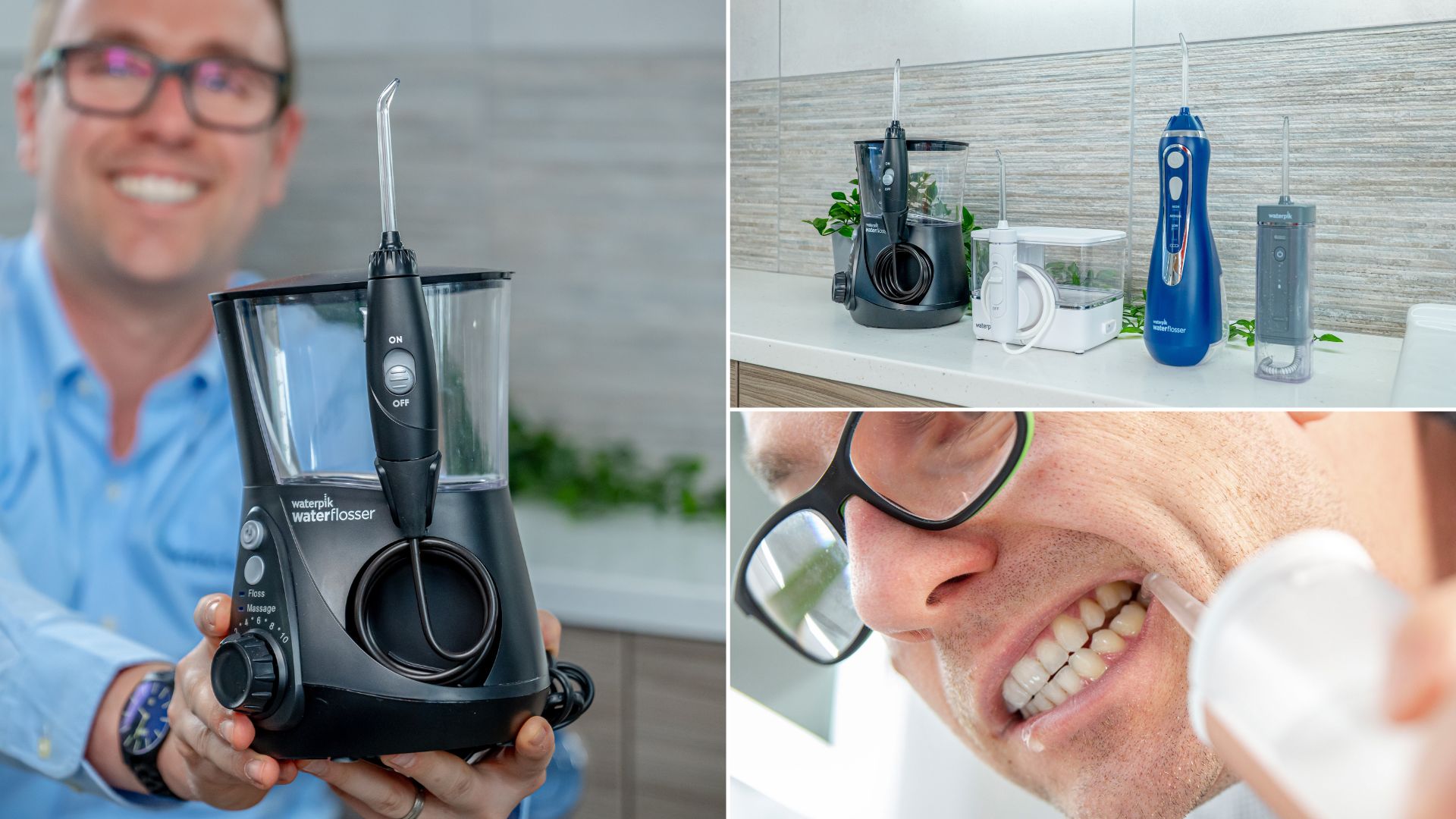
What to look for in a water flosser
In this post we offer recommendations for both corded (countertop) and cordless water flossers. If you have space (approx 6 x 6 inches) for one in your bathroom, we recommend going for countertop over cordless — we explain this in more detail in this section.
Both types of flosser come with similar features, not all of which are necessary. From our hands-on testing, the most essential features of a water flosser are:
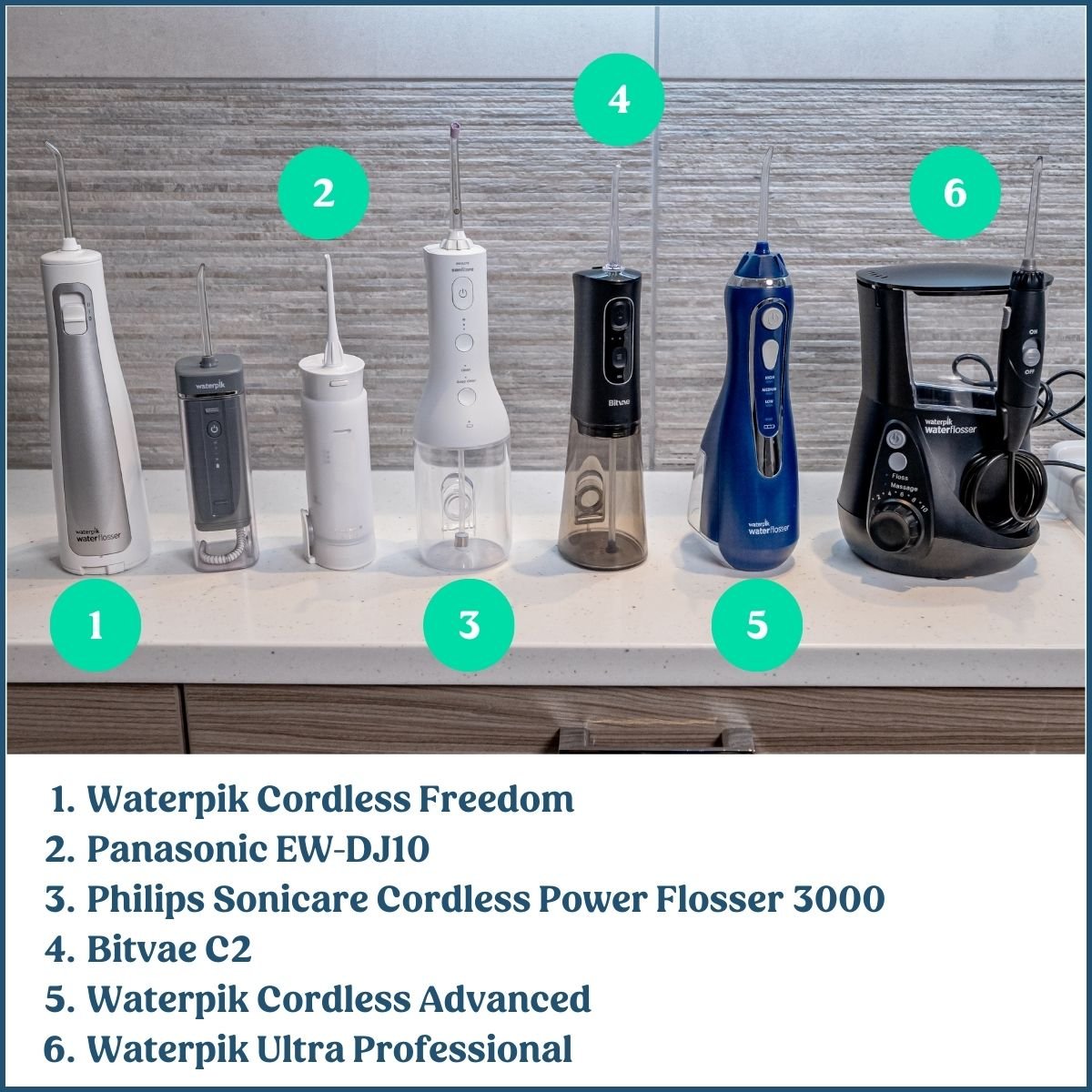
Water flossers are an alternative to string floss
Instead of relying on traditional string floss, water flossers can be a viable substitute. Research indicates that incorporating a water flosser in conjunction with regular tooth brushing can decrease bleeding gums by 37%, a recommendation also supported by the European Federation of Periodontology.
Our in-house dentist Dr. Gemma Wheeler notes that interdental brushes are the most effective method of cleaning, but she does recommend water flossers for some people:
"A water flosser doesn’t replace interdental brushes, which are the most effective interdental cleaning method. My recommendation to patients is to find a cleaning method that works for them, and there is certainly a place for water flossers. The most effective type of interdental cleaning is the one that you will actually do."
In this post we recommend some reliable water flossers based on vigorous hands-on testing and advice from Dr. Wheeler.
Best countertop
Waterpik Ultra Professional WP-660

Why it's the best countertop flosser:
The Ultra Professional WP-660 has all of the essential features we look for in a water flosser. It is a suitable option whether you are taking proactive steps to clean interdentally, have periodontal disease or if you're recovering from oral surgery. We also rate it as the best water flosser for braces (more on that below).
It is not portable like our best cordless choice below, the WP-560, but the slim handle is easy to hold and move around the mouth. The WP-560 is great, but, the smaller handle on the Ultra Professional gives the feeling of greater control. In-hand comfort is really quite important. In our testing, we found it easy to control the water flow from the handle, and the water pressure was easy to adjust with the rotating dial.
The WP-660 is fairly compact with hose storage to keep things neat, although there is no place to store any excess power cable. It actually has a smaller profile than you might imagine and although it's bulky, it doesn’t feel as dominant on a countertop as you might expect
An inherent benefit of a countertop option is that it has a larger water tank. The 600ml capacity means that you can floss for longer or get multiple flossing sessions from one single fill. There are 10 different pressure settings on the Ultra Professional. This is more than you need, but it does give a very finite level of control, which we like. Each setting varies by 10PSI.
Read our Waterpik Ultra Professional Review.

80+ second flossing time |
No place to stow excess power cable |

Easy to rotate the nozzle |
It’s a more expensive option |

10 pressure settings |
|

Water control button on handle |
|

Hose storage |
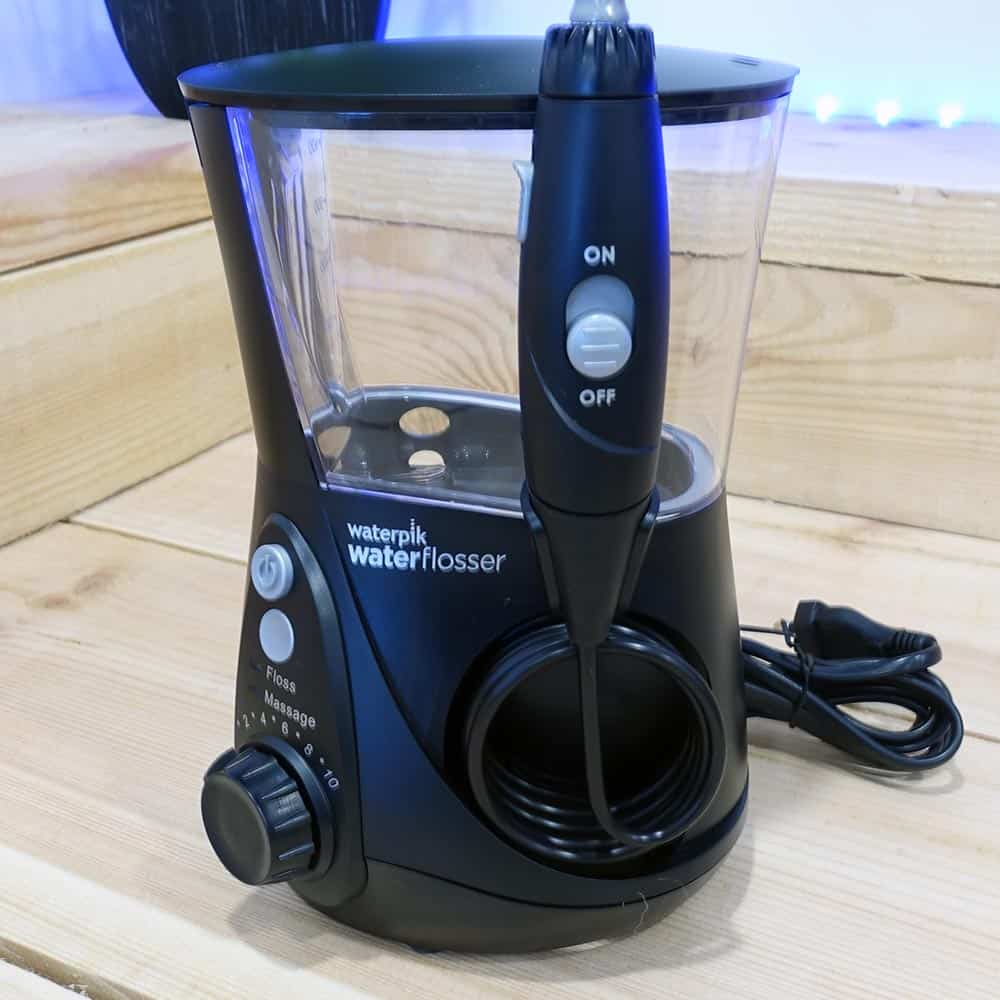
Best cordless
Waterpik Cordless Advanced WP-560

Why it's the best cordless water flosser:
The Cordless Advanced is one of the most comfortable cordless flossers we have used. Because of its portability, it's also better suited to those who travel. The shape and the large area of raised dots on the back make it lovely to hold. You feel in control, even when you want to rotate the nozzle.
The nozzle is easy to rotate so you can reach all the teeth and clean the entire mouth. In fact, rotating the nozzle on the Advanced is possibly easier than on the Ultra Professional. The large wheel used for rotating the nozzle feels natural to use with good feedback. Being able to rotate the nozzle makes it easier to reach all parts of the mouth.
The 207ml tank does offer 45 seconds of use on the most powerful of the 3 pressure modes. This is about half the time of the Waterpik Ultra Professional. You don’t have to rush with either, but a compromise for a more portable option is the smaller tank.
Read our Waterpik WP-560 Review.

45+ second flossing time |
Price – it is expensive |

Easy to rotate the nozzle |
|

Grippy handle |
|

3 pressure settings |
|

Easy to attach magnetic charger |
|

Travel pouch included in the box |
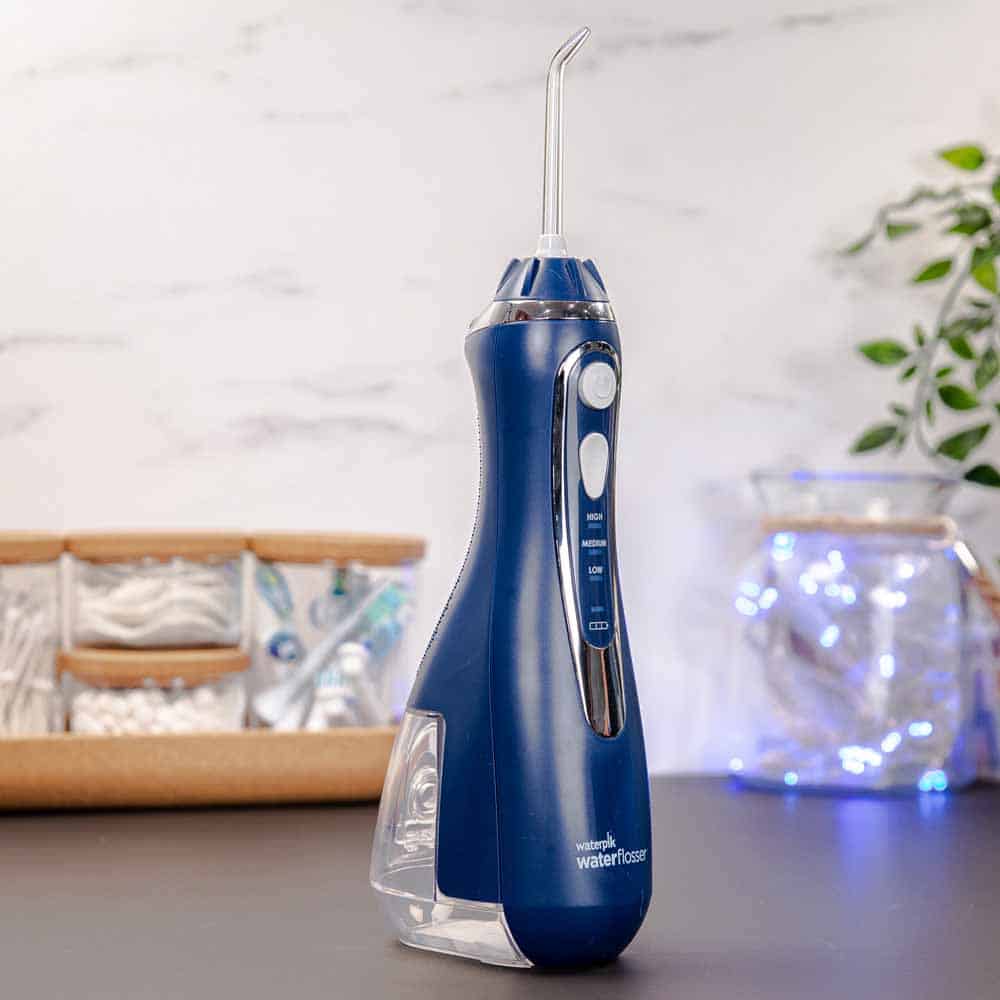
Other flossers we have tested
Only a select few of the water flossers we test actually make it into this best list.
And yet, we can’t say that any of the water flossers we have tested are really bad.
We have been most disappointed by the Waterpik Sonic-Fusion. Admittedly this is a hybrid product, rather than a standalone water flosser. It combines an electric toothbrush and water flosser to create a flossing toothbrush.
Unfortunately, the Fusion isn’t great at either job. It is noisy and cumbersome to use. You don’t get to enjoy all the benefits of an electric toothbrush and water flosser. You are better off sticking with separate items. A regular electric toothbrush and one of Waterpik’s other countertop water flossers.
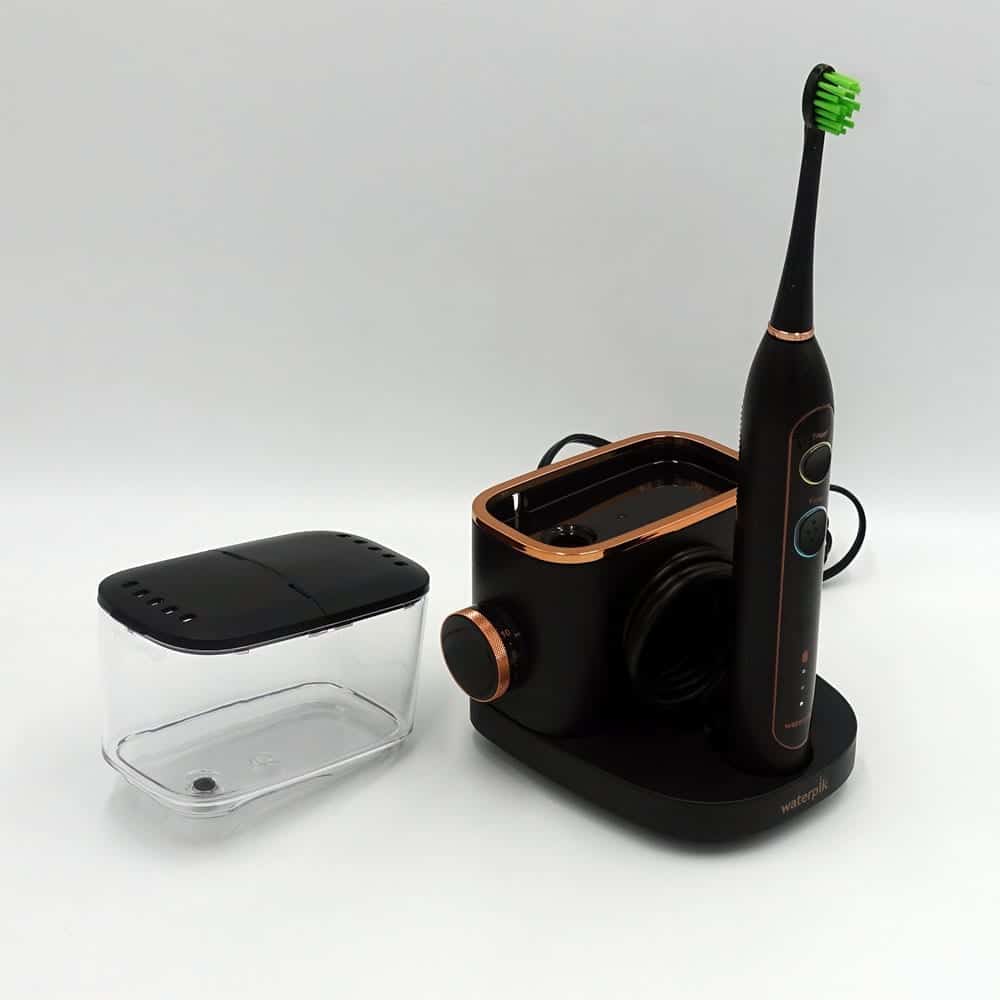
The Waterpik WF-06 is a countertop model that has ‘whitening’ capabilities.
It allows you to add whitening tablets into the handle of the flosser. As the water passes through, it dissolves the tablet. It results in a mildly abrasive solution being pushed against the tooth surface. The idea is that it will remove light surface stains from your teeth.
The tablets contain glycerine which helps to lift the stains off the tooth surface. Silica, also contained in the tablets, is an abrasive ingredient which also helps remove stains. Both are effective stain removers and are commonly found in professional polishing pastes and in powder form for air polishing.
In theory, it works. Waterpik has done its own research and found it to be effective at removing stains.
In practice, people are often disappointed. It is an expensive solution that doesn’t deliver the tooth whitening results most would expect from Waterpik calling it a “whitening” water flosser. It is only ever going to remove extrinsic staining. It won’t change the natural colour of the teeth like professional bleaching.
Keep reading about other flossers we've tested
Oral-B is a major player in the oral care space. It has produced water flossers in the past, the Oxyjet being the most well-known.
But it has been quite some time since it has competed properly within this space. Recently it has attempted to change this with its new Aquacare range.
Given its experience and might within the industry we expected better.
The Aquacare 4 has a 45 second flossing time. It have 2 pressure settings, 2 weeks of battery life and a water resistant design.
It has a rotating nozzle, comfortable to hold and comes with a 2 year warranty.
But, it does not feel the best quality. The retaining clip for the water tank on the Aquacare 4 broke off in our testing.
The nozzle does rotate, but not all that easily.
The different pressure settings and modes are made more complicated than they need to be.
It comes with a bulky charging stand that is less than ideal for travel.
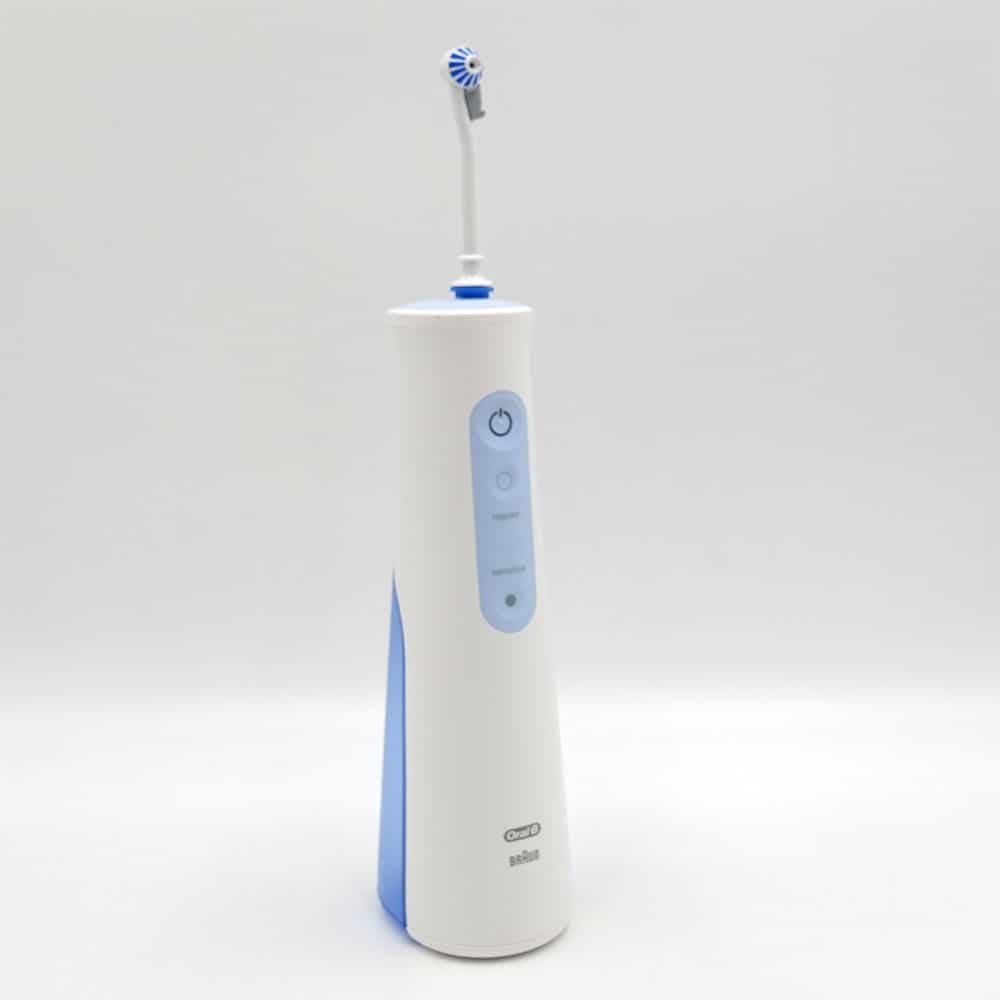
As you will have seen from our top choices, Waterpik does make some excellent products.
The Waterpik Cordless Advanced takes the top spot for best cordless water flosser. A good alternative is the Cordless 3000 Power Flosser from Philips.
It replaces the AirFloss that came before it. It wasn’t a true water flosser, offering bursts of air mixed with water. The Cordless 3000 is and it is a very good product.
It is arguably comparable to the Cordless Advanced, in fact you get longer usage times from it as the tank is bigger and the X shaped water jet allows for a larger area to be cleaned with each pass of the teeth and gums.
However, it isn’t perfect, the Waterpik's nozzles rotate easier and replacement nozzles are more affordable.
The Cordless Advanced and Cordless Select WF-10 have magnetic chargers. In fact, the Cordless Select has a magnetic USB charging cable. This is super convenient and great for travellers.
Yet, despite this benefit, it loses favour because of the cramped grip. You don’t get the same in hand comfort as the vast majority of other models. We found it one of the most awkward models to use.
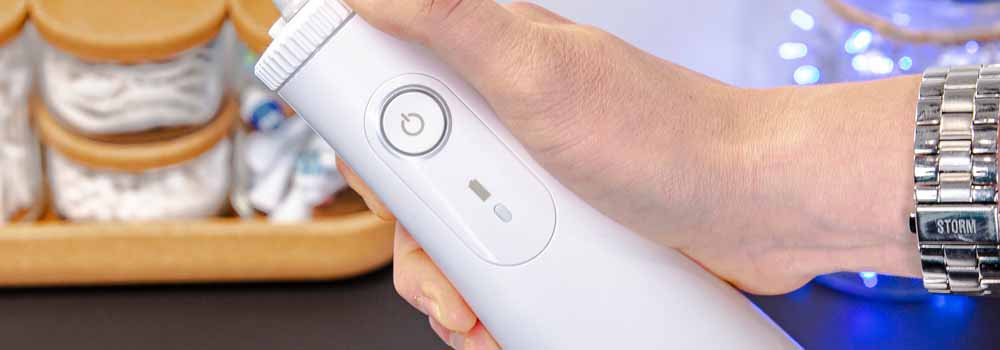
You don’t have to worry quite so much about in hand comfort with the likes of the Waterpik Nano, Ultra or Ultra Plus. These are countertop units. They have slim handles, which the fingers and thumbs easily hold onto.
The Nano, Ultra and Ultra Plus are all good options. But, there is little to differentiate between them. When you consider their features and price, our preference is the Ultra Professional.
None of the Waterpik units will ever be as cheap as the east Asian brands — Truewell, Hangsun, Atmoko and Nicwell to name a few — nor will you get as many accessories in the box.
But if you do want a cheaper option from Waterpik, the WF-03 Cordless Freedom is a good option.
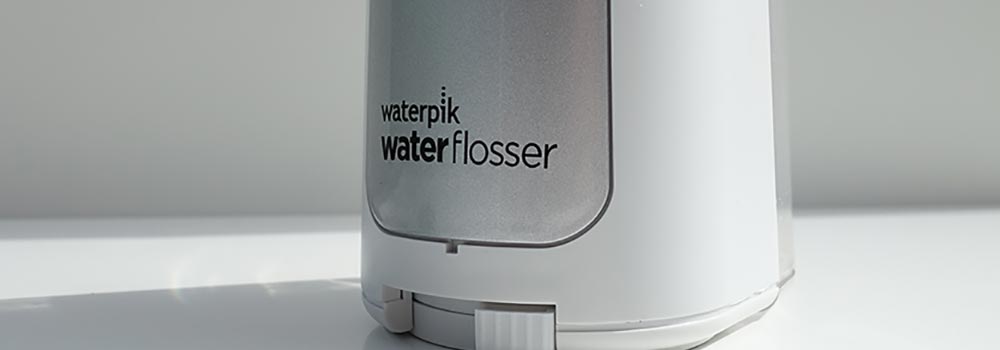
The compromise here is the small water tank. It is just 150ml. This means less flossing time per fill of the tank. It also has removable AA batteries rather than a built-in rechargeable one. But, in its favour, you do have the option of the different types of interchangeable nozzles. You don’t with most other cheap models.
As this page has shown, Waterpik dominate the water flosser market. It comes as no surprise that they have been relatively unchallenged by a major brand.
Oral-B has had a go, but in all honesty, they are not good enough devices. Philips attempt with their Sonicare Power Flosser range of flossers on the other hand though is a different story.
No less than 4 different countertop models and a cordless device have been introduced, although just 2 are available in Australia. They are quite similar, with subtle differences. Our power flosser comparison highlights the notable differences.
All are very good, but it is the power flosser 3000 being the best of the countertop units.
Unsurprisingly there is some similarity between the 3000 and the Waterpik Aquarius. The Power Flosser is the better looking, it is quieter in use too. It is the best alternative to Waterpik from a reputable manufacturer. But, a couple of small details let it down. It has no rotating nozzle and it isn’t quite as good value for money.
All flossers, irrespective of brand, have their pros and cons. For our main recommendations, we have chosen products that are comfortable to use and come with the features that we regard as essential. Comfort is important when it comes to interdental cleaning — the more comfortable a product is, the more likely you are to build a good flossing habit.
Buyer's guide: useful pre-purchase advice
With the help of our in-house dentist Dr. Gemma Wheeler, we’ve added useful notes and tips from our research and testing. In the sections below, we include the most relevant and important information about shopping for a water flosser. If you’ve got any questions or would like further advice, please leave a comment below.
Who should use a water flosser?
Overall, water flossers are not the most effective method for plaque removal. But they still show benefits for gum health.
They are a good option for someone who has tried and failed to use interdental brushes.
Our in-house dentist Dr. Gemma Wheeler says:
"I would recommend a water flosser to certain people:
- Those who have limited hand mobility and so struggle with interdental brushes.
- People with large gaps where a brush doesn’t fit but food gets trapped.
- Those who won’t use floss and brushes due to a gag reflex, negative experience, or who can’t get the technique right.
- Someone with braces, to help clean around the brackets.
I also say anyone who wants to try them can add them to an existing routine e.g. interdental brushes.
Even with the evidence available, I know that the most effective type of interdental cleaning is the one that you will actually do. I want to support people to make flossing a habit."
Cordless vs corded (countertop) water flossers
If you have space (approx 6 x 6 inches) for one in your bathroom, we recommend going for a countertop over a cordless water flosser. There is no evidence to suggest one is better than the other. There are scientific studies that confirm the effectiveness of both. In our own hands-on testing, we have found them to be as effective as each other.
We’ve found countertop models slightly more comfortable to use. They also have larger water reservoirs, meaning they have longer cleaning times and need to be refilled less often. They often come with extra features, such as extra pressure settings or a built-in timer.
That being said, a cordless water flosser is still a perfectly good option if you don’t have space for a countertop model, or if you travel a lot. Countertop units need a power outlet. They need to be plugged in for them to work. You are therefore more restricted on where you place them. Cordless units are wire-free. This makes them more portable and convenient, particularly if you don’t have a socket in your bathroom.
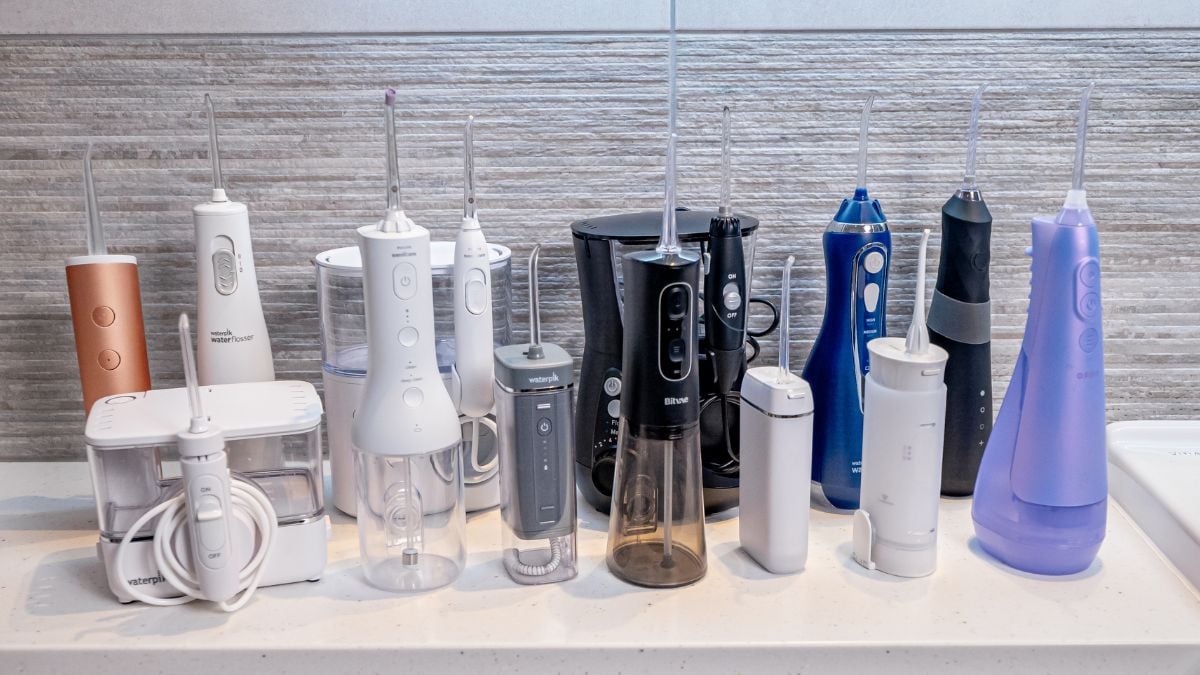
Examples of how much space countertop flossers take up
One of the drawbacks to countertop water flossers is that they are larger. Each model is different, but you generally need an area 6 x 6 inches or 15 x 15cm on your countertop to accommodate the footprint of the water flosser. You then want to have about 10-12 inches (25-30cm) space above this free for the unit to stand upright.
Each corded unit has a power cable that is around 3-4ft (90-120cm) in length. The hose from the handle tends to be of a similar length too. A maximum distance from the power socket and the sink is approximately 2 meters. Any more than this and you will likely struggle.
If you are short of countertop space, one option is to store the flosser elsewhere and get it out as and when you need it. Many people place it in a bathroom cabinet. This overcomes the space issue, but regular use can become more challenging as it takes more effort and time to get it setup, and there isn’t the visual reminder from it sitting in plain sight.
Here is a table comparing the sizes of some of the most popular water flossers:
| Model | Width | Depth | Height |
|---|---|---|---|
| Waterpik Ultra Professional | 4.70 inches (11.94 cm) | 3.80 inches (9.65 cm) | 10.35 inches (26.29 cm) |
| Waterpik Ultra Plus | 5.60 inches (14.22 cm) | 5.30 inches (13.46 cm) | 9.90 inches (25.15 cm) |
| Waterpik Sidekick | 5.70 inches (14.48 cm) | 3.90 inches (9.91 cm) | 4.84 inches (2.29 cm) |
| Waterpik Nano | 5.40 inches (13.72 cm) | 4.40 inches (11.18 cm) | 6.80 inches (17.27 cm) |
| Hydro Floss | 8.27 inches (21cm) | 3.93 inches (10cm) | 4.92 inches (12.5cm) |
A bit more on why having different pressure settings is useful
You might not need to switch between them all the time, but having the choice is valuable. Whilst countertop water flossers can have as many as 10 settings, 2 or 3 is common for cordless models. You want at least a low and a high setting. As the names imply, the pressure varies between these. Low is more gentle and high more intense.
Pressure is measured in Pounds Per Square Inch (PSI) or Bar. Typically the pressure ranges from 10 to 100 PSI, although some models reach as much as 160 PSI. Low pressure tends to be around 30-45 PSI and high 60-80 PSI, subject to model.
The extra power can blast away more debris, but sheer force is not essential and may feel uncomfortable to some people. Lower pressure with the correct technique is equally as effective. There is no evidence to support using higher power over a lower power. A low setting is ideal for inflamed, sensitive and bleeding gums. If you have healthy teeth and gums, the higher setting can be used.
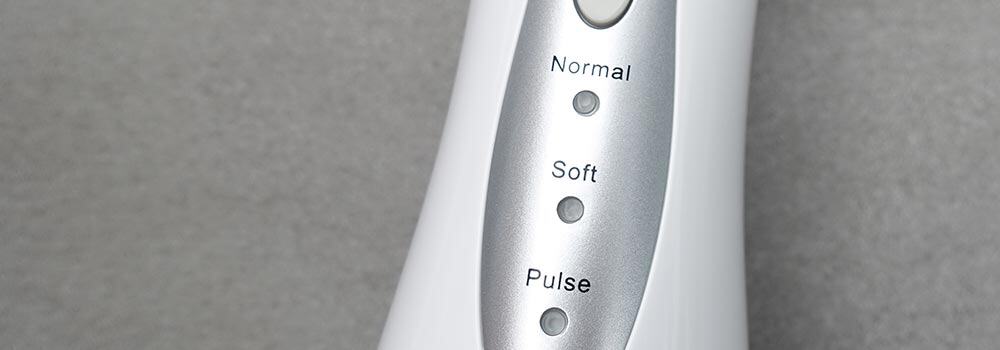
How a water flosser can be helpful for brace wearers
Water flossers can easily remove food and other debris from around the brackets on the teeth. All of our recommendations above are a good choice for brace wearers. Many brands also have specialised tips for braces to achieve even better results.
Using a water flosser to remove food and plaque will reduce the risk of decay on these tooth surfaces. They also have some positive effects on gum health, as proven in independent research.
Dr. Gemma Wheeler regards them as a good option for people who have braces, but also recommends using interdental brushes:
"If you have braces I would recommend a water flosser in addition to brushing and interdental brushes to get between the teeth.
Interdental brushes are still recommended for interdental cleaning with braces because the overwhelming evidence shows that interdental brushes are the most effective method for cleaning interdentally."
In the section below Dr. Wheeler goes into more detail about the various options for flossing with braces and how you can use a water flosser to maintain good oral health whilst undergoing orthodontic treatment.
Find out more about using a water flosser with braces...
Water flossing vs string flossing with braces
There is agreement that having braces slightly increases your risk of things like tooth decay and gum disease. That is because the brackets stuck to your teeth retain more bacteria, compared to if they weren’t there. Some dentists fall back on the recommendation of string floss for cleaning between the teeth when you have braces.
There are very few studies that directly compare floss and water flossers for brace wearers. Those that do, such as Jolkovsky or that by Pithon et al have mixed results. They seem to agree that both floss and water flossers both remove more bacteria than tooth brushing alone. But they can’t agree that one is much better than the other. String flossing is very technique sensitive. In non-brace wearers it is normally found to be the least effective technique for cleaning between the teeth. Wearing braces makes using floss an even bigger challenge.
The wires get in the way of pulling floss down between the teeth. A flossing tool can help you use string floss. For example, a floss threader allows you to get the floss above the wire and between the teeth. A platypus tool is used like a flossette - it holds the floss tight and the thinner plastic arms mean you can slide it under the wire no problem. Using a water flosser can be easier.
Also, the physical contact of string floss can be more beneficial than water. But when cleaning around a brace, using string floss can be very time consuming and awkward. Water flossers enable you to clean all around the bracket as well as between the teeth. They dislodge food particles. And it is believed that the water flow acts to massage the gums and reduce bleeding from the gums.
Overall, interdental brushes are the most effective option for cleaning. But when it comes to floss vs water flossers, there is no definitive right or wrong answer — it's about finding a cleaning method that works for you. There is certainly a place for water flossers. Ideally, though, you want to be combining the use of a water flosser with interdental brushes.
How a water flosser can help with braces
The design of a dental brace means you have more surface area for bacteria and food to stick to. Food particles get caught in brackets and wires. Getting food particles and dental plaque trapped around your braces can increase your risk of dental disease.
The increased surface area and nooks and crannies of the fittings give more opportunity for plaque to build up on the teeth. It also makes the plaque more difficult to remove.
Failing to clean around these can result in:
- Staining of the teeth
- Decalcification (white spots) on the tooth surface
- tooth decay
- Gingivitis (gum disease)
- Bad breath
Good plaque removal is vital to prevent the onset of gum disease
To remove plaque, you should brush around all parts of your brace and all of the surfaces of your teeth. There is a mixed consensus about when to brush your teeth if you have braces. Ideally, you should brush each time you have eaten. Generally, the advice is to brush straight away. This is especially true if you are wearing removable braces as it means you can put them in as soon as possible. Sometimes, the advice is to leave it about 30 minutes after every meal or snack, before you brush. This would be the recommendation if you have eaten or drunk something particularly acidic. This includes fruits and fizzy drinks.
A manual brush works well if used correctly, but our advice is to invest in an electric toothbrush. A study by the American Journal of Orthodontics and Dentofacial Orthopaedics found that electric toothbrushes promote better cleaning habits. If you find toothbrushing difficult, switching to an electric toothbrush has an even better effect.
You need to floss in addition to brushing
Even the best toothbrushes and brushing technique won’t remove all the plaque around a brace. You need to use other flossing tools in addition to brushing. The wires and brackets restrict the movement of floss in between the teeth and up into the gum line. This makes flossing with braces awkward.
You do not need a water flosser as a brace wearer, but you do need to clean interdentally. Water flossers make it more convenient to clean these surfaces and reach the gumline. The water and the pressure at which it hits the teeth gets into the smallest of gaps. It also disrupts the bacteria chains that cause gum disease. The evidence doesn’t support water flossers removing plaque. But yet, it still has a positive effect on the gums.
An orthodontic flossing tip can be useful
There are a variety of interchangeable tips available for water flossers. The orthodontic tip can be very useful for braces. It combines a traditional jet tip with bristles to wash and sweep away the debris. The manual action of the bristles gives an extra dimension to the clean. They can help dislodge and disrupt debris and bacteria.
Not all water flossers come with them, but they can usually be purchased separately. Our two main recommendations above — the WP-660 and WP-560, do come with an orthodontic tip supplied in the box. Nearly all of Waterpik's models are compatible with the orthodontic tip, so Waterpik is a good choice in that respect.
The clinical evidence for and against water flossers
Water flossers are one of the less common forms of interdental cleaning. They are safe, with little ability to cause damage to the gums. Going by the studies that have been completed, it seems that water flossers do not fully remove plaque. Despite this, they can still have a positive effect on the gums, as we explain below.
Waterpik publishes its own clinical research
Waterpik has listed a large amount of clinical research on its website. Some people could perceive this as biased. But it is worth noting that it is independently scrutinised to be published in peer-reviewed journals. This means that you can discount any obvious problems with their data. However, do consider that they are unlikely to promote data that doesn’t support their hypotheses (read: advertising claims). Many of the articles are not available in full online, only the Waterpik summary or the paper abstracts.
Highlights from their research are (the link will lead you to the journal article, not the Waterpik page):
- Using a water flosser in addition to toothbrushing reduces bleeding gums and plaque levels. Lyle et al. compared bleeding scores and plaque levels in two groups: those using only an electric toothbrush; those using an electric toothbrush + water flosser. They found that the group who used the water flosser had decreased levels of bleeding gums. The plaque levels were also lower in those using the water flossers. Although these results were of less statistical significance.
- Waterpiks reduce gingival inflammation more than flossing does. Barnes et al. 2005 study found a Waterpik to be more effective than string floss in reducing gingival bleeding. This study compared manual toothbrush + floss to manual toothbrush + water flosser and sonic toothbrush + water flosser. They miss out a key comparison group: sonic toothbrush + flossing. This makes the evidence somewhat skewed in favour of the water flosser. Much of the benefit of switching to a powered brush is presented as being the water flosser, but there is no way to compare.
- Water flossers are effective and safe for implants. Kotsakis et al. showed that water flossers are as effective as interdental brushes and more effective than chlorhexidine mouthwash. They reduce the amount of bacteria on implants, without damaging the implant surface.
Independent reviews and papers support most of these claims
Independent reviews by Ng and Lim as well as Worthington et al showed that water flossers do not reduce plaque levels. This is also shown in Waterpik’s own study in 2011. Despite ineffective plaque removal, water flossers do reduce inflammation of the gums. They reduce bleeding from the gums, an indicator for active gum disease.
Water flossers might not reduce levels of plaque, but it is thought they do disrupt forming plaque from above and below the gum level. The theory is that this changes the structure of the plaque layer. If the plaque structure is altered, it may cause less inflammation in the gums. But at present, this is only a theory.
The water flossers also flush out food debris. This 2015 review by Sälzer et al also supports water flossers for improving gingival health versus no interdental cleaning aid. The European Federation of Periodontology (EFP) also recommends water flossers for interdental cleaning in their evidence based guidelines.
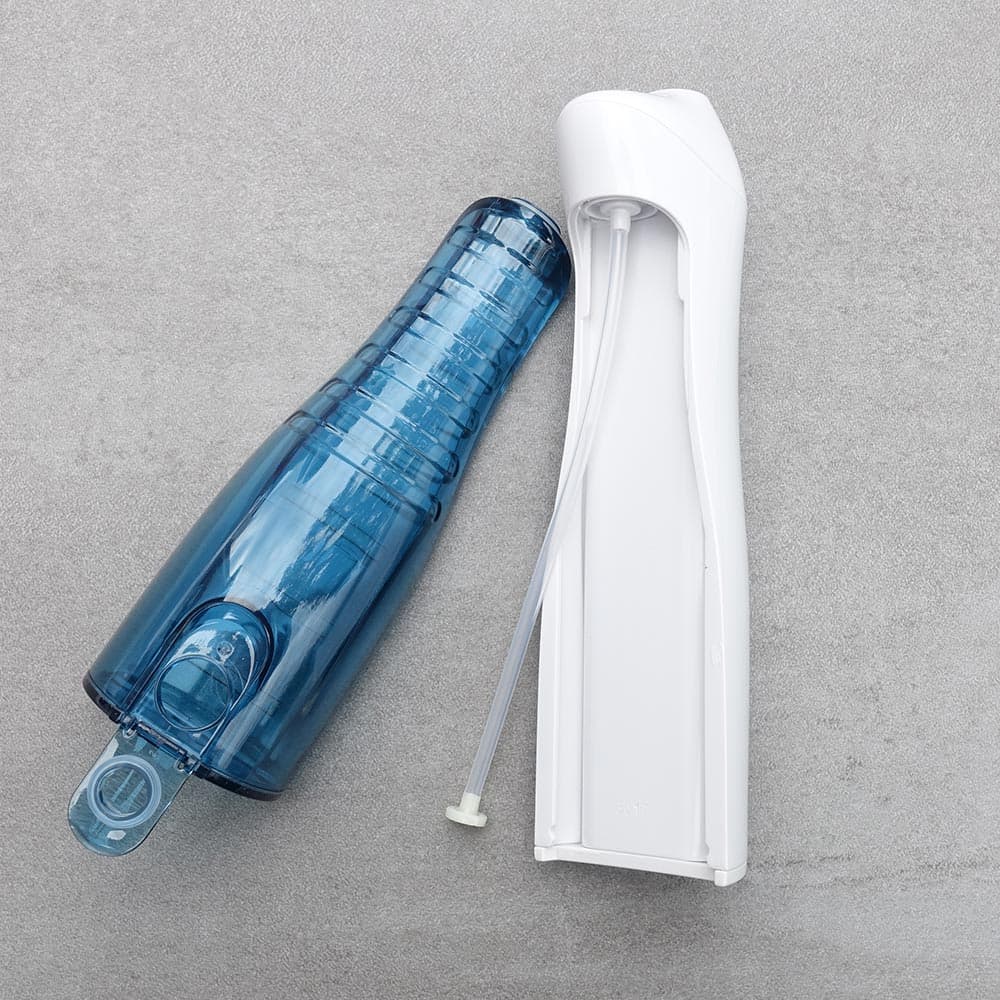
Find out more in our water flosser reviews
We've gathered the advice and recommendations above by thoroughly testing and comparing many water flossers. We usually create a written review, video review, or both for each brush.
You can see our written reviews below and watch our video reviews and comparisons on our YouTube channel.
- Philips Sonicare Power Flosser 3000, 5000 & 7000 review
- Philips Sonicare Cordless Power Flosser 3000 review
- Waterpik WP-660 Ultra Professional review
- Waterpik Cordless Advanced WP-560 review
- Philips Sonicare Power Flosser 3000 vs 5000 vs 7000
- Panasonic EW1511 review
- Waterpik Cordless Select review
- Waterpik Cordless Express review
- Waterpik Ultra Plus review
- Oral-B Aquacare 4 Water Flosser review
- Philips Sonicare AirFloss Ultra review
- Waterpik Whitening water flosser review




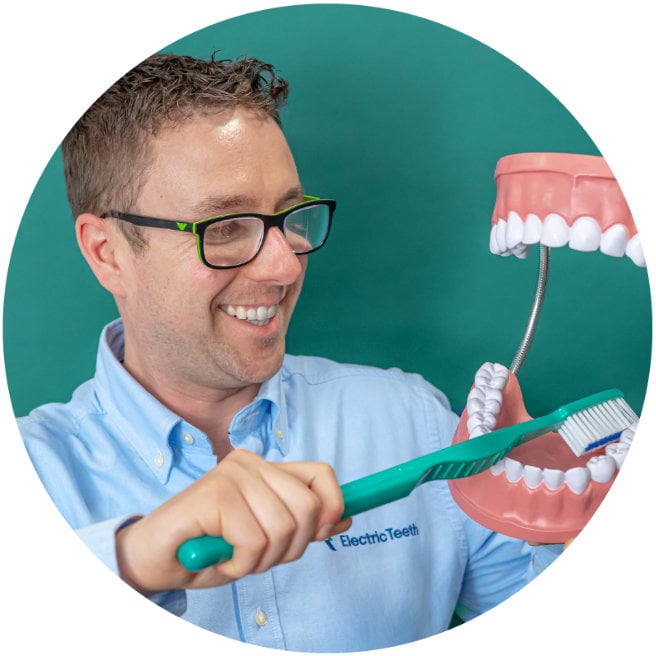
What about using a water flossed with peroxyl? I've found this very effective against gingivitis but to do so you need one with a relatively small tank and pulse jet otherwise it's very wasteful. Phillips do the best in this bracket but two have failed for me requiring a replacement.
This isn't an approach we would generally recommend. There might be specific/personal circumstances where this could be beneficial but we leave this advice to be given by dental professionals upon providing personalized oral care routine recommendations.